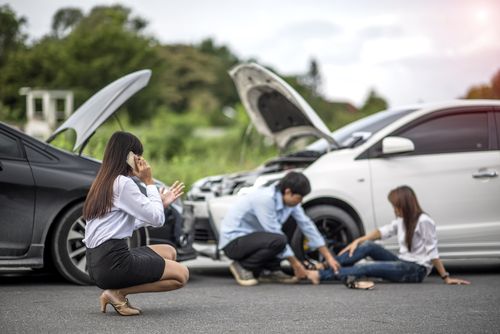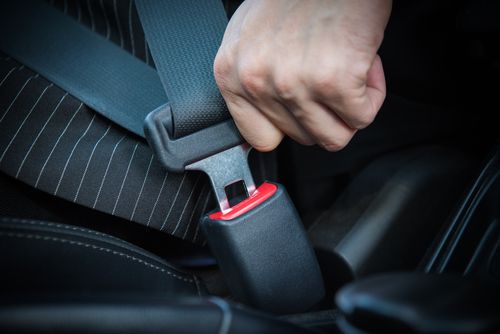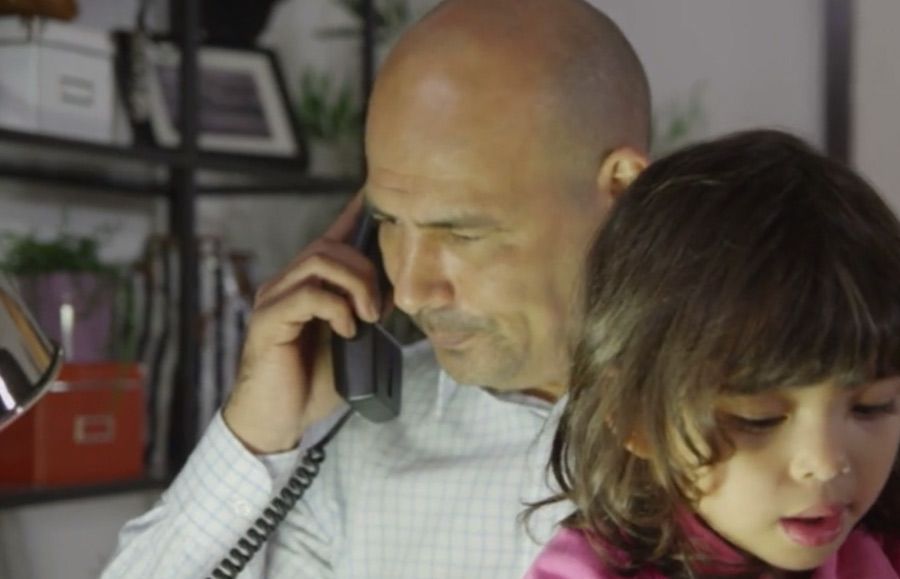
The Nassau County Police Department recently reported what the police consider the most dangerous intersections in the county. Every one of the intersections with the highest number of crashes in the county is where the Long Island Expressway meets a local road.
The top five are:
- South Oyster Bay Road, Syosset: 129 crashes
- Searingtown Road, North Hills: 110 crashes
- South Oyster Bay Expressway, Syosset: 100 crashes
- North Broadway, Jericho: 90 crashes
- Sunnyside Boulevard, Woodbury: 78 crashes
The police stepped up enforcement at these intersections and offered safety tips to drivers and pedestrians.
For a free legal consultation, call 516-451-7900
What Is a Head-On Collision?
Head-on or frontal collisions happen when two vehicles traveling in opposite directions collide. A single-vehicle head-on collision can occur when a driver hits a stationary object like a tree or phone pole. Head-on collisions are relatively rare but are probably the deadliest of all traffic accidents.
For example, only about one in every fifty accidents is a head-on collision, but one in ten fatalities results from a head-on collision. The National Highway Transportation Safety Administration (NHTSA) reports that they are more common in rural areas, with only 7 percent of urban car crash fatalities resulting from head-on collisions.
What Should I Do After a Head-On Collision?
As with any car accident, there are steps you should take if you can at the scene of an accident and steps you should take later. Especially at the scene, if you’re badly injured, you will need to rely on the police and your attorney to handle these items. All of these suggestions assume that you are healthy enough to complete them.
Some of the things you should do or have done are:
- Don’t leave the scene unless a law enforcement officer or emergency medical person tells you to do so. In New York, leaving an accident scene where there were any injuries is a crime punishable by a year in jail. If there is a severe physical injury or a death, you can receive felony charges with a maximum sentence of seven years. If there was only property damage, you can leave the scene once you’ve exchanged contact and insurance information with the other parties. Report the accident at the nearest police station once you leave.
- Obtain contact and insurance information from all the other parties as the law requires. If you are in any condition to do so, obtain information from any potential uninvolved witnesses to the accident. The police will likely get this information, and your attorney can get access to it later if you can’t do it.
- Take photos of the scene and keep any dashcam recordings you may have. Your attorney can request any surveillance camera footage later if it is needed.
- Get immediate medical attention. If the head-on collision injured you badly, you will likely go straight to the hospital with emergency medical personnel. If not, and even if you think you don’t have serious injuries, go to an ER or your physician as soon as you can. Not all injuries, even severe ones, show up in immediate symptoms. You’ll want to be sure that you have no injuries or get treatment if you do. Also, your failure to seek medical treatment can be a problem later, as the at-fault driver or that driver’s insurance company might try to use it as evidence to minimize your injuries.
- Consider contacting a lawyer. If you or one of your loved ones suffered an injury in a head-on collision, your physical, emotional, and financial health should be your focus right now. Work on getting better or helping your injured loved one and let an attorney handle getting you the monetary compensation you may be entitled to due to the accident.
Click to contact our personal injury lawyers today
What Makes Head-On Collisions so Dangerous?
A head-on collision involves two vehicles, each weighing at least two tons and possibly more than two tons, moving at their full speed for conditions, and crashing into one another.
You don’t have to be a physicist to see that force and mass create serious problems here. The speed of each vehicle compounds with the other for an effective rate of speed; two cars, when they are traveling at 35 miles per hour and they collide, will, in effect, be traveling at 70 miles per hour.
Once the collision happens, the fronts of both vehicles are likely severely damaged, with debris from the impact flying everywhere, including possibly through one or both windshields. Plus, the force of the high-speed collision will toss the occupants of both vehicles around, causing impact injuries, which add to the potential injuries caused by the crushing and compressing of the vehicle’s front half.
Complete a Free Case Evaluation form now
What Injuries Are Typical in a Head-On Collision?
Head-on collisions cause life-shattering injuries. Most head-on collisions result from the contact between the upper body and the dashboard and steering wheel. Many of them will not only cause serious medical issues but can also bring about catastrophic financial changes to your life. You need a lawyer to recover all of the damages your injuries inflict.
Some of the more common injuries include:
- Traumatic Brain Injury – Traumatic brain injury (TBI) refers to brain damage from an outside force or a penetration of the brain. Traumatic brain injury can severely impact your life with the potential loss of cognitive or motor function and other life-altering impacts. Even seemingly mild brain trauma can result in potentially fatal complications. When your doctor calls a brain injury mild, that relates only to the initial presentation of symptoms, not your prognosis. TBIs that medical professionals deem mild can still result in serious, lasting effects and complications. If you are diagnosed with a TBI, remain on watch for any symptoms, complications, or lingering effects.
- Spinal Cord Injury – As with brain injuries, a spinal cord injury can change your life beyond recognition. Spinal cord injuries, usually caused by injuries to the vertebrae in the neck and spine, whether temporary or permanent, can cause paralysis from the point on the spinal column where the injury occurred down the rest of the body. Permanent paralysis can result, but even lesser injuries can bring about loss of sensation or fine motor control.
- Fractures – The tossing and impacts experienced in a head-on collision can lead to severe fractures. From severe skull fractures causing TBI to crush fractures of one or more limbs resulting in amputation, the fractures in a head-on collision can be catastrophic.
- Burns and Scarring – Depending on the speeds of the vehicles involved in the collision, explosions, and fires are not uncommon in head-on collisions. Such injuries, painful to treat and slow to heal, can lead to lifelong scarring and disfigurement. Particularly for young people, this leads to severe emotional damage, even mood disorders, chronic pain, loss of motion, and reduced motor skills.
- Internal Organ Damage – A head-on collision will toss around anyone in the car without a seat belt-and possibly throw them out of the vehicle. For those who remain in the vehicle, the crushing of the vehicle’s front end can compress the occupants and cause significant internal organ damage by injuring the torso and rib cage. Internal bleeding from such injuries is life-threatening, while the destruction or surgery of some organs can, even if not fatal, lead to significant lifestyle changes.
- Whiplash – Even though we don’t always treat whiplash very seriously, it is, in fact, a serious medical condition. Whiplash results from the rapid twisting and turning of the neck muscles and ligaments in a collision and can leave the sufferer with long-term chronic pain and limited movement.
What Damages Can You Recover in a Long Island Head-On Collision
If you or a loved one has suffered an injury in a Nassau County head-on collision, you will seek to recover financial compensation for the injuries you have suffered. Most people recover losses from this type of accident in a personal injury lawsuit brought under the legal doctrine of negligence.
To sue under New York’s No-Fault auto insurance law, you must show that your economic damages exceed your no-fault coverage. For injuries like pain and suffering, you suffered a severe injury.
In New York, winning a personal injury case means you will have to prove that:
- The at-fault driver owed you a duty to drive carefully and avoid injuring you.
- The at-fault driver breached that duty by driving carelessly or recklessly
- That, as a result of the at-fault driver’s breach, you suffered an injury
- For which monetary damages will make you whole
In other words, you must prove the other driver was careless and hurt you. You must also show that your injury would not have happened but for the carelessness and that your injury was a foreseeable result of that carelessness. You can then look at recovering three different kinds of damages. New York does not cap or limit the damages you can recover from a car accident.
Economic Damages – Economic damages are easily provable and result from a concrete out-of-pocket loss. They include hospital and doctor bills, drugs, lost wages, and property damages. If you can show that your economic damages exceed the coverage available under your no-fault policy, you can sue to recover these damages.
Non-Economic Damages – More subjective than economic damages, these include pain and suffering, loss of earning capacity, loss of future earnings, loss of consortium. To sue for these, you must prove that you suffered a severe injury. According to New York law, a severe injury includes death, dismemberment, disfigurement, loss of a fetus, a fracture, permanent loss of use a bodily organ, member, function, or system; a significant limitation; or an injury that keeps you from your daily activities for 90 of the 180 days immediately following the accident.
Punitive Damages – Punitive damages go to the victim but not as compensation for injuries are available when the at-fault party’s conduct is egregious, extreme, or immoral. Punitive damages punish the at-fault party and deter others from similar conduct.
How Can a Long Island Car Accident Attorney Help
After a head-on collision, you might well have suffered severe injuries that have had you in and out of medical care and off work for an extended time. The world appears to be all costs and no income as you try to recover and get your life back as near to normal as it’s ever going to get. The last thing you should be doing at a time like this is arguing with insurance company lawyers and claims adjusters.
Insurance companies are in the business of making money. And they make money by taking in premium dollars, not by paying out on claims. They know you’re at a low point and getting increasingly desperate to get some money paid on your claim.
Insurance company lawyers are human, but their training tells them to take advantage of you at this low point in your life. They know probably close to the penny the full value of your claim. Your first settlement offer will be considerably below that figure.
To avoid a panicked acceptance of that lowball offer, retain a skilled and experienced car accident attorney who understands claims settlements and the insurance company’s tactics.
Let a knowledgeable car accident attorney be your advocate and help you to recover the damages you deserve. An attorney will negotiate for you, help build the evidence file for your case, and, if necessary, go to court on your behalf. Then you can focus on your recovery. Contact us for a free consultation








